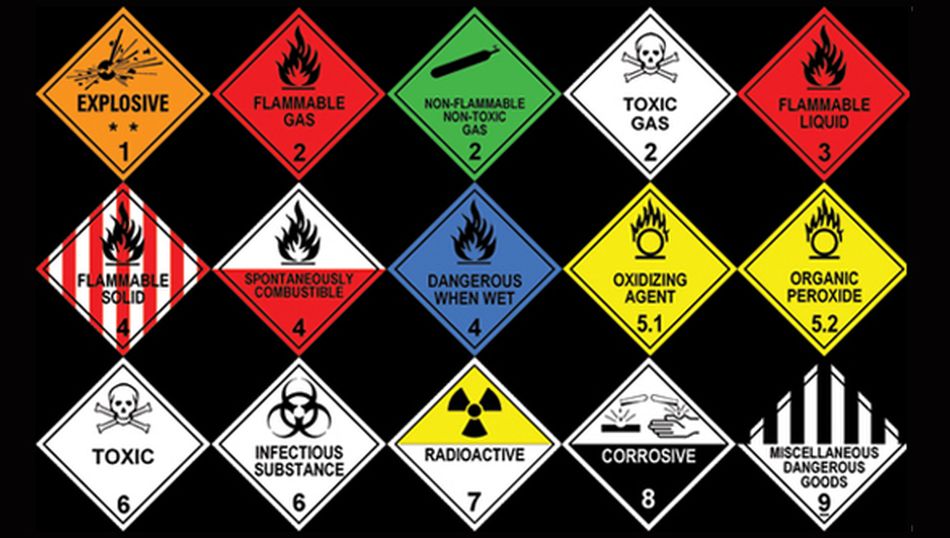Nine different types of dangerous goods
05.07.2024

There are nine United Nations (UN) classes of dangerous goods, each of which requires special attention to prevent accidents to people, property, the environment or other goods during transportation.
- Explosives - these substances can cause explosions or release significant amounts of heat gas or smoke.
- Flammable gases - compressed or liquefied substances, or dissolved under pressure. They include flammable, non-flammable and toxic gases, as well as gases that corrode metals.
- Flammable liquids - These liquids have a flash point below a certain temperature and can ignite easily. This class includes fuels, solvents, paints, and some chemicals.
- Flammable solids - those that ignite and burn easily fall into this category. It includes self-reactive substances, pyrophoric substances, and substances that give off flammable gases when they come in contact with water.
- Oxidizing substances. This class includes substances that can release oxygen and increase the combustion of other materials. This class includes oxidizing agents, organic peroxides, and substances that can react dangerously when in contact with other substances.
- Toxic and Infectious Substances - Toxic to humans, animals, or the environment. This class includes toxic chemicals, pesticides, some pharmaceuticals, and infectious substances.
- Radioactive - radioactive materials and substances that emit ionizing radiation. This class includes radioactive isotopes used for medical, industrial and research purposes.
- Corrosive substances - substances that may cause serious damage to living tissue or materials on contact. This class includes acids, alkalis and other corrosive chemicals.
- Miscellaneous - substances and articles that do not fall into the previous classes but still pose a hazard during transportation. This class includes environmental hazards, lithium batteries, and some magnetized materials.


